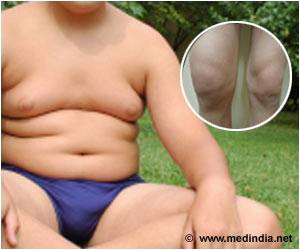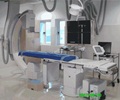After undergoing coronary bypass surgery off-pump, old patients did as well as they did with on-pump procedure using a heart-lung machine to circulate blood and oxygen through the body.

This large, multicenter trial—the German Off-Pump Coronary Artery Bypass Grafting in Elderly Patients, called GOPCABE—was the first to evaluate on-pump versus off-pump bypass surgery among patients aged 75 or older. The primary endpoint was individual patients' combined outcomes of death, stroke, heart attack, repeat revascularization or new renal replacement therapy within 30 days of surgery. Researchers found no significant difference in the primary endpoint between patients receiving the on-pump and off-pump procedures (8.2 vs. 7.8 percent, p = 0.74).
"Our study shows that coronary bypass surgery can be performed in the elderly population with excellent results, and this is equally true for both techniques," said Anno Diegeler, MD, PhD, head of the department of cardiovascular surgery at the Heart Center Bad Neustadt in Germany and the study's lead investigator. "These findings suggest clinicians can select the lower cost off-pump procedure without risk to the patient."
Coronary artery bypass graft surgery, or CABG, is one of the most commonly performed operations in the U.S. and the world and consumes more resources in cardiovascular medicine than any other procedure. In on-pump CABG, the patient's heart is stopped and blood is circulated through a heart-lung machine, where it is oxygenated and returned to the patient. In the off-pump technique, the surgeon uses a retractor to lift the still-beating heart and perform all coronary artery grafts. Off-pump CABG eliminates the need to insert a tube called a cannula into the aorta (the main artery distributing blood to the brain and body), cross-clamp the aorta, connect the patient to the heart-lung machine, and stop and restart the heart.
Previous studies comparing the two techniques also found similar results for on-pump and off-pump CABG, but none of these studies focused exclusively on elderly patients. To address concerns that the elderly may not benefit equally from both techniques because of their higher risks, GOPCABE enrolled 2,539 patients aged 75 or older scheduled for elective, first-time CABG in 12 cardiovascular centers in Germany.
Patients were randomized to receive on-pump or off-pump CABG. Results for all components of the primary endpoint were similar between the groups at 30 days. Patients had no significant differences in rates of death (2.8 vs. 2.6 percent), stroke (2.7 vs. 2.2 percent), heart attack (1.7 vs. 1.5 percent), and new renal replacement therapy (3.1 vs. 2.4 percent), and a slim difference in repeat revascularization (0.4 vs. 1.3 percent). At 12 months, researchers again found no significant difference in the composite endpoint between on- and off-pump (14.0 vs. 13.1 percent, p = 0.483).Study results are important for surgeons who favor off-pump surgery, Dr. Diegeler said.
Advertisement
According to Dr. Diegeler, the similar result from both techniques is beneficial to facilities and patients in developing countries, where the on-pump procedure may come at a higher cost since instruments used in off-pump CABG can be re-sterilized, but components of the machine used in on-pump cannot.
Advertisement
Source-Eurekalert











